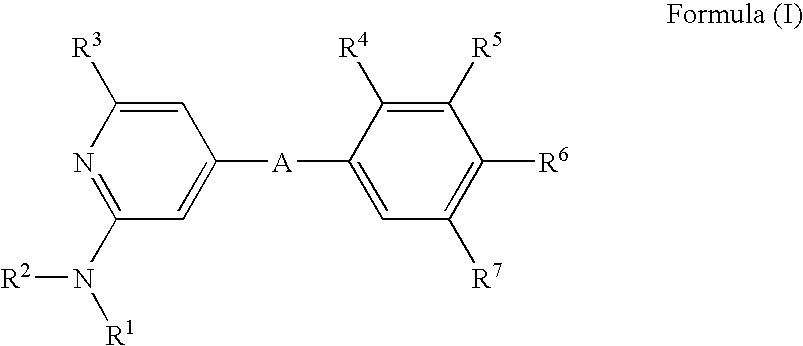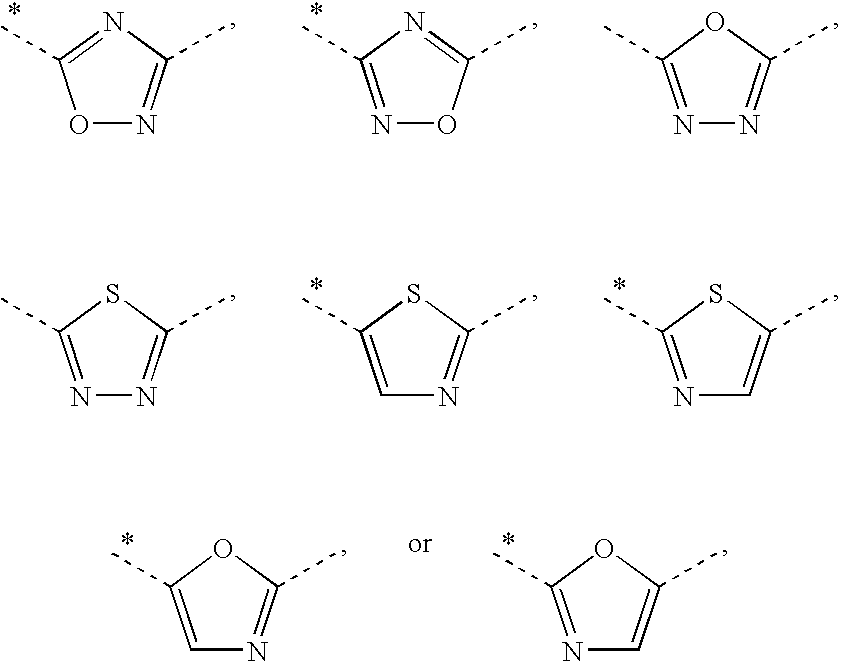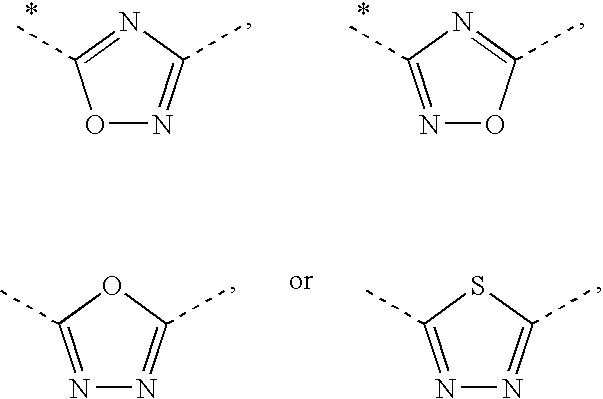Amino-pyridine derivatives as s1p1 /edg1 receptor agonists
a technology of edg1 receptor and aminopyridine derivative, which is applied in the direction of drug composition, immunological disorders, metabolism disorders, etc., can solve the problems of severe organ, cell, tissue or joint damage, autoimmune response development, and unregulated control mechanisms
- Summary
- Abstract
- Description
- Claims
- Application Information
AI Technical Summary
Benefits of technology
Problems solved by technology
Method used
Image
Examples
example 1
rac-3-{4-[5-(2-Dimethylamino-6-methyl-pyridin-4-yl)-[1,2,4]oxadiazol-3-yl]-2-ethyl-6-methyl-phenoxy}-propane-1,2-diol
[0293]a) To a suspension of 2-dimethylamino-6-methyl-isonicotinic acid (331 mg, 1.64 mmol) in DCM (40 mL) and Hünig's base (2.85 mL, 16.4 mmol), PyBOP (1.16 g, 2.22 mmol) followed by 4-allyloxy-3-ethyl-N-hydroxy-5-methyl-benzamidine (225 mg, 0.96 mmol) is added. The beige suspension is stirred at rt for 1 h before it is diluted with DCM (150 mL), washed with 1 N aq. KHSO4 solution and brine, dried over Na2SO4, filtered and concentrated. The crude product is purified by MPLC on silica gel eluting with EA to give the hydroxyamidine ester intermediate; LC-MS: tR=0.85 min; [M+1]+=397.17. This material is dissolved in dioxane (30 mL) and the resulting solution is stirred at 95° C. for 16 h. The solvent is evaporated and the crude product is purified by MPLC on silica gel eluting with EA to give {4-[3-(4-allyloxy-3-ethyl-5-methyl-phenyl)-[1,2,4]oxadiazol-5-yl]-6-methyl-pyri...
example 2
4-{5-[2-(Ethyl-methyl-amino)-6-methyl-pyridin-4-yl]-[1,2,4]oxadiazol-3-yl}-2,6-dimethyl-phenol
[0295]a) To a cooled solution (0° C.) of 4,N-dihydroxy-3,5-dimethyl-benzamidine (1.12 g, 6.19 mmol), 2-chloro-6-methyl-isonicotinic acid (1.06 g, 6.19 mmol) and Hünig's base (1.20 g, 9.29 mmol) in DCM (30 mL), PyBOP (3.55 g, 6.81 mmol) is added. The mixture is stirred at 0° C. and is warmed to rt overnight. The white suspension is diluted with EA (200 mL), washed four times with 1 N aq. KHSO4(50 mL), dried over MgSO4, filtered and concentrated to give the hydroxyamidine ester intermediate as a yellow-beige solid; LC-MS: tR=0.91 min; [M+1]+=334.01. This material is dissolved in dioxane (60 mL) and the resulting solution is stirred at 95° C. for 4 h. The mixture is cooled and the solvent is removed in vacuo. The crude product is purified by MPLC on silica gel to give 4-[5-(2-chloro-6-methyl-pyridin-4-yl)-[1,2,4]oxadiazol-3-yl]-2,6-dimethyl-phenol (935 mg) as a yellow solid; LC-MS: tR=1.03 min...
example 3
(R)-3-(4-{5-[2-(Ethyl-methyl-amino)-6-methyl-pyridin-4-yl]-[1,2,4]oxadiazol-3-yl}-2,6-dimethyl-phenoxy)-propane-1,2-diol
[0297]To a solution of 4-{5-[2-(ethyl-methyl-amino)-6-methyl-pyridin-4-yl]-[1,2,4]oxadiazol-3-yl}-2,6-dimethyl-phenol (55 mg, 0.163 mmol) in isopropanol (3 mL) and 3 N aq. NaOH (0.5 mL), (R)-3-chloro-1,2-propanediol (98 mg, 0.894 mmol) is added. The mixture is stirred at 65° C. for 72 h before another portion of (R)-3-chloro-1,2-propanediol (98 mg, 0.894 mmol) is added. Stirring is continued at 65° C. for 4 days before a third portion of (R)-3-chloro-1,2-propanediol (98 mg, 0.894 mmol) is added. After stirring for another 48 h, the mixture is diluted with EA (50 mL) and washed with 1 N aq. NaOH (10 mL) followed by brine (10 mL), dried over MgSO4, filtered and concentrated. The crude product is purified on prep. TLC plates with DCM containing 10% of 7 N NH3 in methanol and 5% of methanol to give (R)-3-(4-{5-[2-(ethyl-methyl-amino)-6-methyl-pyridin-4-yl]-[1,2,4]oxadi...
PUM
 Login to View More
Login to View More Abstract
Description
Claims
Application Information
 Login to View More
Login to View More - R&D
- Intellectual Property
- Life Sciences
- Materials
- Tech Scout
- Unparalleled Data Quality
- Higher Quality Content
- 60% Fewer Hallucinations
Browse by: Latest US Patents, China's latest patents, Technical Efficacy Thesaurus, Application Domain, Technology Topic, Popular Technical Reports.
© 2025 PatSnap. All rights reserved.Legal|Privacy policy|Modern Slavery Act Transparency Statement|Sitemap|About US| Contact US: help@patsnap.com



